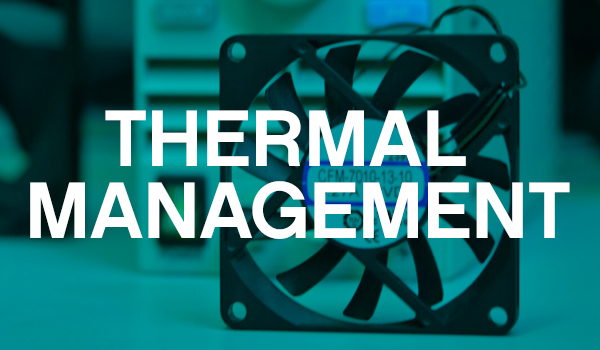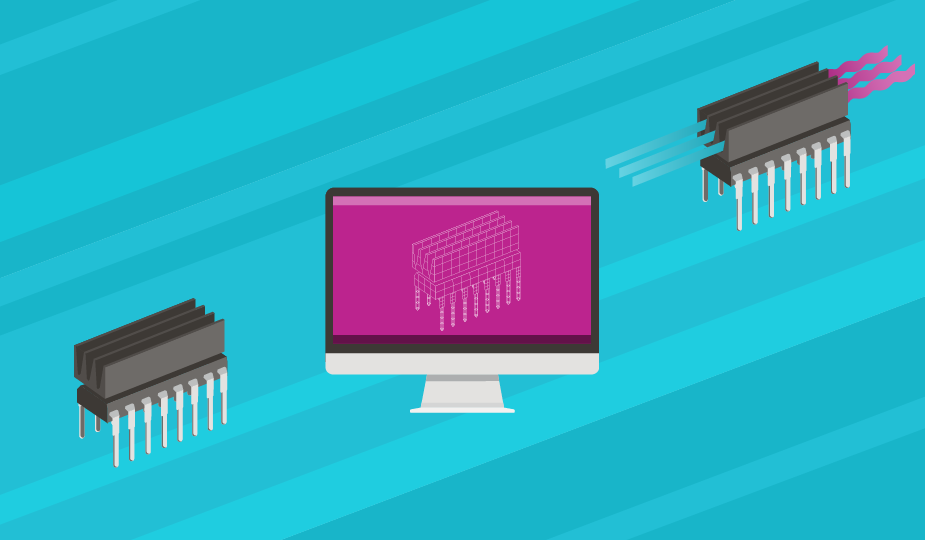The Future of Thermal Simulation with CFD

Futurists have a long history of predicting the future and an equally long history of being completely wrong. By limiting the scope, with a narrower focus and looking into the nearer future, accuracy does tend to go up. Even then, very few could have predicted how transformational the unveiling of modern AI would have on every business around the globe, nearly overnight. While predictions for the future of thermal simulation are not nearly as explosive, a singular, industry-changing development is not impossible, particularly if an improvement on the Navier-Stokes equation is developed. Most likely, however, progress in computational fluid dynamics will continue to unfold at a measured pace, like other high-performance computing (HPC) domains. Commercial codes, developed and refined over several decades, have been tailored to conform to conventional architectures rather than push the boundaries of innovation. Check out previous blog posts from our thermal simulation with computational fluid dynamics (CFD) series below:
- What is Computational Fluid Dynamics?
- How to Conduct a Thermal Simulation with CFD
- CFD Thermal Simulation Best Practices
Near Future Expectations for CFD Development
The landscape of CFD is always undergoing a transformation fueled by growing model complexities, the need for enhanced accuracy in large-scale simulations, and a shift toward prioritizing simulation over physical testing. These factors are continuously driving momentum for change within the field of CFD, accelerating the pace of advancements and opening doors to exciting possibilities.
In the present era, the accessibility of CFD has significantly improved with the advent of high-performance computing (HPC), open-source licensing models, and cloud computing. This progress has enabled companies to scale their simulations, execute multiple cases concurrently, and leverage unlimited computing cores at a more affordable cost. Simultaneously, notable advancements in solver capabilities, turbulence models, and automatic meshing techniques have contributed to more resilient and precise CFD results.
As more companies exploit CFD’s capabilities, its applications’ range continues to grow exponentially. Nowadays, CFD is employed to study the dynamics of blood flow in the heart, enhance the efficiency of ventilation systems, and optimize the launch mechanisms of rocket boosters.
In the near future, we can expect a growing number of companies to prioritize simulations over physical testing, leveraging the full potential of CFD. During the design phase, physical testing of vehicles or aircraft can prolong the overall process, taking months or even years. However, with modern computing capabilities, full simulations of entire automobiles or aircraft are now possible, reducing the need for extensive physical prototypes.
Achieving high accuracy is crucial to ensure that simulations have the same credibility as physical tests. This involves scaling up model sizes for high-fidelity simulations, requiring world-class supercomputing resources.
GPU Acceleration
The flexibility offered by supercomputing resources is well acknowledged, but the significance of another emerging trend in CFD, namely GPU acceleration, becomes evident in extensive applications.
GPUs offer immense potential for accelerating CFD simulations in comparison to CPUs. With the growing optimization of popular CFD codes for GPUs, organizations are seeking GPU clusters and HPC infrastructure that possess the following capabilities:
- Massive scalability to accommodate expanding CFD workloads.
- Flexible accessibility, allowing seamless transitions between CPU and GPU usage as required.
- Cost-effective solutions that eliminate the substantial upfront costs associated with replacing traditional servers.
Transforming CFD with Machine Learning and Deep Learning
Machine learning (ML) and deep learning (DL) are revolutionizing the field of computational fluid dynamics, enabling the rapid prediction of new geometries in seconds and at a reduced cost. To leverage the capabilities of ML and DL in CFD, organizations need:
- High-performance GPUs, such as AWS Trainium or Amazon EC2 P4d and G5 instances, to train ML models effectively.
- Fast and seamless access to training data, facilitated by Amazon FSx for Lustre and Amazon S3
- Robust tools for model development, training, and deployment, including Amazon SageMaker, AWS Batch, and AWS ParallelCluster
Integrating CFD with Other Simulation Tools
Integration of computational fluid dynamics with other simulation tools is crucial for achieving comprehensive thermal analysis in various engineering applications. By combining CFD with complementary thermal analysis tools, engineers can gain insights into complex heat transfer phenomena, optimize thermal performance, and ensure the reliability of systems. This integration enables a holistic approach to thermal analysis, empowering engineers to make informed decisions and drive advancements in thermal management.
One significant integration is the coupling of CFD with finite element analysis (FEA) for thermal-structural analysis. This integration enables engineers to analyze the effects of heat transfer on the structural response of components or systems. It is particularly useful in applications such as electronics cooling, where accurate prediction of temperature distribution and subsequent thermal-induced stresses is critical for design optimization and reliability assessment.
Another important aspect is the integration of CFD with computational heat transfer tools. This integration allows engineers to investigate detailed heat transfer mechanisms within a fluid domain, such as conduction, convection, and radiation. By integrating CFD with tools that solve heat transfer equations, engineers can accurately predict temperature profiles, identify hot spots, optimize heat exchanger designs, and assess thermal management strategies.
In addition, integrating CFD with optimization algorithms enables comprehensive thermal analysis and design optimization. By incorporating advanced techniques like genetic algorithms, particle swarm optimization, or surrogate modeling, engineers can effectively explore the design space, identify optimal geometries, and enhance thermal performance. This integration proves particularly valuable in applications where efficient heat dissipation and optimal thermal efficiency are paramount, such as in automotive cooling systems or the design of electronic devices.
Summary
While no one can perfectly predict the future, it is obvious that there will be changes, though exactly how groundbreaking they will be and when they happen remains to be confirmed. However, other than fundamental changes in the Navier-Stokes equations and completely new and unique processes, most of these changes will likely be in the form of greater automation in modeling with AI tools, greater integration across simulation tools, and simplified or improved human interfaces. Whatever the future holds for CFD, it will be exciting yet important for all of us to continue to keep our skills and knowledge up to date with the latest tools. If you have any questions, Same Sky’s thermal design services and range of thermal management components are here to help.







